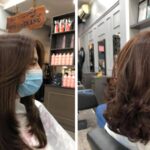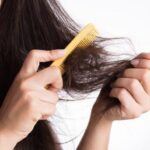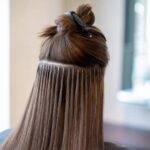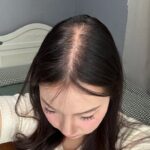Some believe that regularly changing shampoos is necessary as hair can become “immune” to a formula over time, leading to reduced softness, shine, and the potential development of dandruff.
However, others caution against frequent switching. Our scalps can adapt to shampoos, and sudden changes in pH levels, for example, can irritate the scalp and lead to hair loss. Different shampoos have different formulas, and if your hair struggles to adapt, it may suffer damage or increased hair loss.
So, Should You Switch Shampoos or Stick to One Type?
The experts suggest having multiple shampoos on hand rather than just one. There are indeed instances where switching shampoos is not just a preference but a necessity for maintaining scalp health. Environmental factors, such as increased pollution or a change in climate, can impact your scalp, requiring adjustments to your hair care routine. Similarly, hormonal changes can affect sebum production, necessitating a change in shampoo.

Using the same shampoo for extended periods can lead to a buildup of residue, which may not be effectively removed by that same shampoo. (Illustrative image)
It’s worth noting that long-term use of the same shampoo can cause residue buildup, reducing its effectiveness. However, switching to a different shampoo for the next wash can help remove any residue left by the previous product.
You’ll know it’s time to change shampoos when you notice signs like dandruff, an itchy scalp, or a loss of volume and shine. If your scalp is becoming oilier or your hair is looking dull, despite regular washing, it’s a good indication that a change is needed.
Alternating between shampoos can be beneficial to address seasonal changes. For example, you might opt for a moisturizing shampoo in the dry winter months and switch to a lighter formula in the summer when your scalp tends to produce more oil.
If your scalp is generally healthy and problem-free, you can stick to your favorite shampoo. However, if you’re facing issues like dandruff, itching, or excessive hair fall, alternating between different shampoos may be advantageous. For instance, if an anti-dandruff shampoo seems to lose its effectiveness over time, switching to another anti-dandruff option with a different active ingredient or alternating between the two may yield better results.
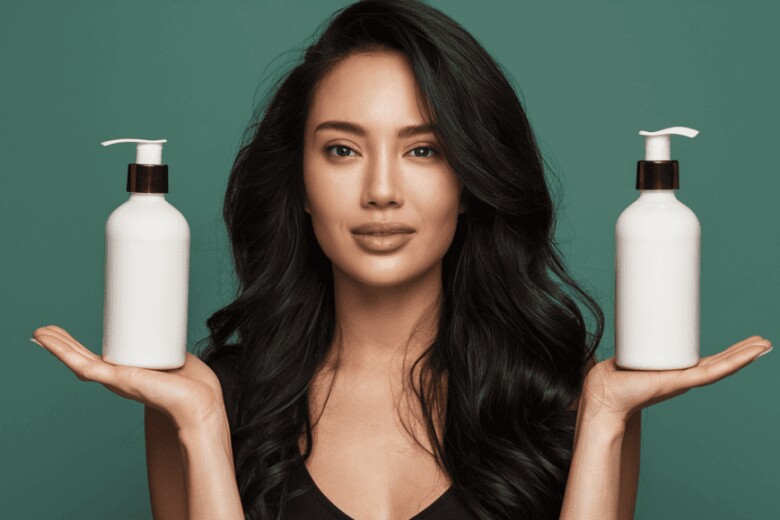
Whether you should switch shampoos depends on your hair’s condition and environmental factors. It’s possible to use different shampoos interchangeably. (Illustrative image)
In summary, the decision to switch shampoos frequently depends on your hair’s condition and the effectiveness of your current shampoo. However, changing shampoos is not a trivial matter, and several considerations should be kept in mind to ensure a smooth transition.
Things to Consider When Switching Shampoos
1. Understand Your Scalp’s Needs
Before deciding to change shampoos, it’s crucial to understand your scalp’s needs. Contrary to popular belief, hair length doesn’t dictate shampoo choice; scalp condition does. A healthy scalp is the foundation for strong, shiny hair. Your scalp’s needs can vary depending on factors like skin type, hormones, environment, and seasons.
For instance, oily scalps require a shampoo that regulates sebum production without drying out the skin, while dry scalps need a moisturizing and soothing formula. Sensitive scalps may benefit from gentle, non-irritating shampoos to prevent adverse reactions.

Understanding your scalp’s needs and any issues you’re facing is essential before changing shampoos. (Illustrative image)
Is It Harmful to Switch Shampoos on a Whim?
While it’s not inherently harmful to switch shampoos based on preference, doing so without careful consideration can have consequences. Frequent changes can disrupt your scalp’s balance, leading to irritation and hair damage. Each hair care product has a unique formula, and it takes time to see the full effects, so it’s recommended to try a new shampoo for at least three weeks before deciding if it suits your scalp.
Additionally, some shampoos contain ingredients like silicones or sulfates, which can build up on the hair and scalp. Alternating too often between products with differing ingredients can make it challenging to assess the effectiveness of a treatment and disrupt your scalp’s natural cycle. Therefore, opting for shampoos with gentle formulas can help minimize the risk of hair damage.
How to Successfully Switch Shampoos

Give your scalp time to adjust to the new shampoo, and use it for at least three weeks to adequately evaluate its effectiveness. (Illustrative image)
If you’ve decided to change your shampoo, approach it thoughtfully to avoid unwanted effects. First, ensure you understand your scalp’s needs and choose a shampoo that suits them. Once you’ve selected a new product, use it for a minimum of three weeks. This adaptation period allows your scalp to get accustomed to the new formula, and it gives you time to assess how well it works for you.
Pay close attention to how your scalp and hair react during this time. If you notice improvements, such as reduced dandruff or better moisturization, it’s a good sign that you’ve made the right choice. However, if you experience itching, irritation, or changes in your hair’s oiliness, you may need to reconsider your selection.
“Stop the Endless Hair Loss: Ladies, Ditch This Harmful Habit”
Enhancing one’s hair is a desire shared by many, with straightening, curling, coloring, and hair extensions being popular choices. Hair extensions, in particular, have become an increasingly trendy option in the beauty industry. However, what many don’t realize is that hair extensions can cause significant harm.






























